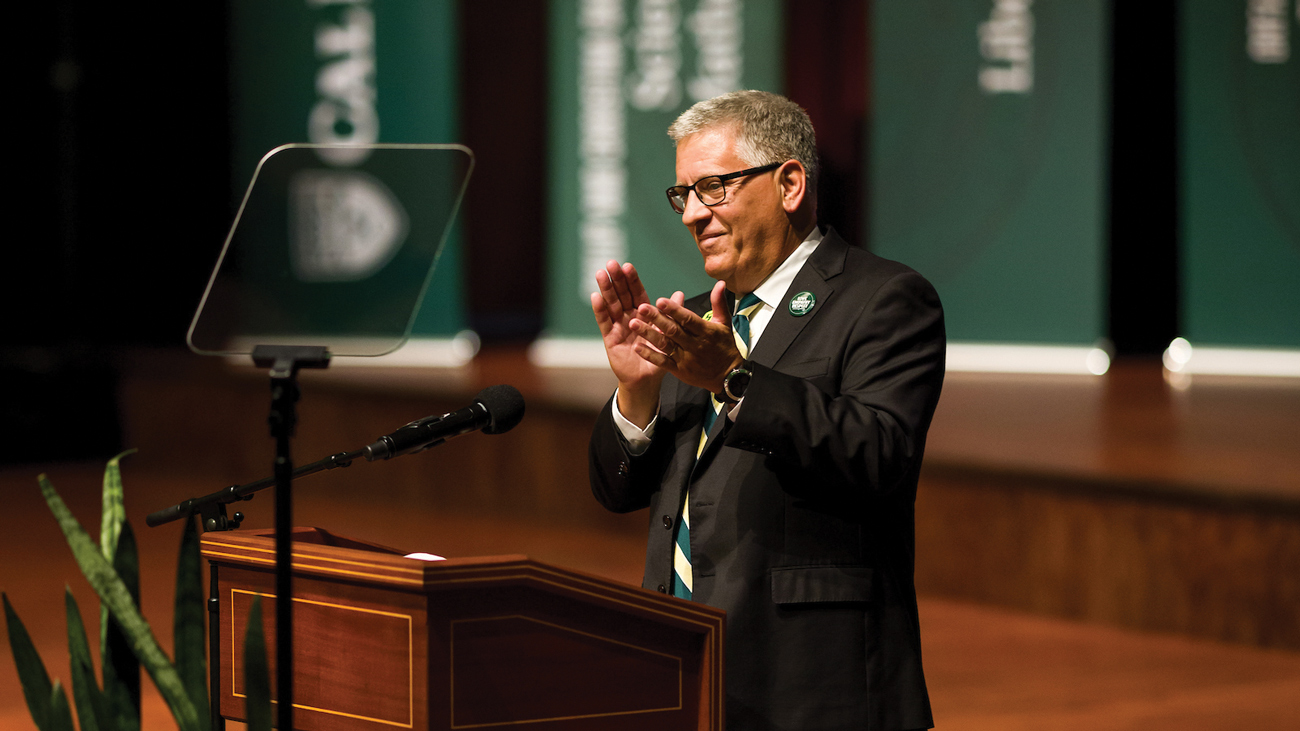Changing to Remain the Same
Cal Poly needs to stay nimble and ready for the latest challenges in today's world so it can continue to be a place for Learn by Doing, writes President Armstrong.

If you haven’t visited campus recently, you may have some trouble recognizing it! Although it can be frustrating to work and study amid construction, and although change is not always conducive to preserving fondly remembered spots from college days, change and growth are signs of health and vigor on a university campus.
Though it sounds like a paradox, Cal Poly has to change to remain itself. A recent slate of top rankings by U.S. News and World Report, Forbes and Money Magazine are a great honor — but also a reminder that we can’t rest on our laurels. We are that good, but will we stay that good? More importantly, can we be even better?
I think the answer is yes, for several reasons. First, through the Cal Poly Opportunity Fee and the College Based Fee, we are in a better position to attract amazing students with financial need from across the state and to enhance Learn by Doing opportunities and student success. Second, the CSU Board of Trustees recently approved a necessary increase in tuition, which will help address years of chronic underfunding. Third, the 2022 state budget contained an historic agreement that will increase both enrollment and funding for the CSU each year for five years.
Cal Poly needs to grow to serve more exceptional California students and because California needs more Ready Day One graduates. That goal involves some initial steps now that lay the foundation for more transformative steps in 4-5 years.
Those steps include repurposing space in the campus core away from administrative uses and toward uses supporting student success — like classrooms, labs, faculty and student-facing staff offices. We’ve already purchased a building near the airport where we will relocate some staff who can do their work off campus, freeing up 40-45,000 square feet. Another step is adding classrooms and faculty offices to new housing and student success projects.
The third initial step points directly to the transformation to come: Starting with students applying for 2024-25, applicants to some majors will have the choice to opt in to a year-round calendar. Students who choose this path will start at Cal Poly in summer 2024 and will be scheduled to be away from campus during the fall, winter or spring term during their first and third years. A generous donor has pledged $300,000 to enable students with financial need to study abroad during their “off term.” This move toward year-round operations will allow us to make more efficient use of resources all year. It will also allow us to grow enrollment more quickly than would otherwise be possible.
To be ready for summer 2024, we will be hiring additional faculty during this year, and we will be communicating with applicants and their families about these new options. As we gain experience with year-round operations, and as new facilities and resources come online, we will expand the number of students and faculty, and the number of majors involved. We will also continue to seek donor support so that every student has equitable access to study abroad, internships, and other high-impact educational practices. This is as important as expanding enrollment — students frequently tell me that experiences like these changed their lives. And of course, we are in the middle of the conversion to semesters effective 2026-27!
A lot is changing at Cal Poly, but with the goal of remaining ourselves despite the constant changes of the world around us. I am confident that we can make the needed changes while staying true to who we have been all along: the place where Learn by Doing was born and will live forever.
Sincerely,
Jeffrey D. Armstrong
President


